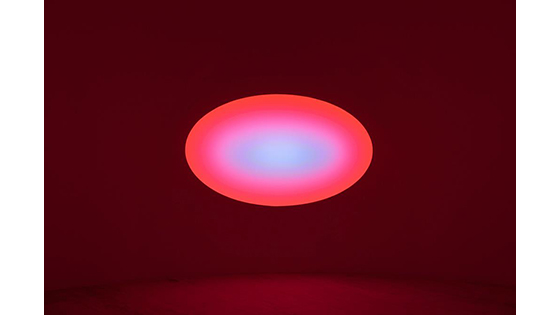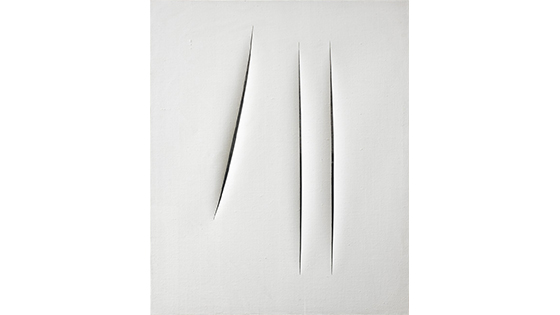The St. Regis Rome e Galleria Continua rinnovano la loro proficua collaborazione con l’inaugurazione della terza esposizione, nel segno della ricerca artistica e del dialogo tra l’arte contemporanea e gli ospiti dell’albergo romano.
The St. Regis Rome e Galleria Continua sono lieti di annunciare che sarà il duo di artisti cinesi Sun Yuan & Peng Yu ad esporre nell’hotel della Capitale, presentando una selezione di opere collocate nella maestosa lobby per permettere un’interazione tra queste e gli ospiti. L’albergo romano si propone così ancora una volta come sede ideale per l’esposizione delle migliori testimonianze artistiche del panorama dell’arte contemporanea internazionale, ospitando i due artisti che lo scorso anno sono stati invitati dal curatore Ralph Rugoff a prendere parte alla 58° Biennale d’Arte a Venezia.
The St. Regis Rome è entrato nella sua “nuova era” riaprendo le porte nel novembre del 2018 dopo un meticoloso restauro. Con il progetto condotto in collaborazione con Galleria Continua, The St Regis Rome si fa portavoce del sostegno al partimonio artistico e culturale e ha dato vita a un ricco programma che consente al pubblico italiano ed internazionale di avvicinarsi ai capolavori dei migliori esponenti della scena artistica contemporanea.
Galleria Continua nasce nel 1990 a San Gimignano per iniziativa di Mario Cristiani, Lorenzo Fiaschi e Maurizio Rigillo e trova sede negli spazi di un ex cinema, lontano dalle grandi città e dalle metropoli moderne, nel borgo senza tempo di San Gimignano, immerso nella storia.
Conosciuti internazionalmente per il carattere spesso destabilizzante e provocatorio delle loro opere e per l’uso di materiali singolari, Sun Yuan & Peng Yu hanno iniziato a collaborare in coppia dalla fine degli anni ’90. Il loro lavoro è incentrato sulla costante conferma del paradosso, sulla ricerca perpetua della dualità tra il bianco e il nero, tra realtà e menzogna, tra manifesto e celato. Le loro opere sono la dimostrazione di una costante analisi della vita attraverso l’esperienza a cui spesso anche il pubblico è invitato a partecipare nella volontà di trovare l’essenza e la sostanza che si nasconde dietro l’apparenza.
Le opere selezionate per l’esposizione al The St. Regis Rome sono tre: Teenager Teenager (2011); I didn’t notice what I am doing (2012) e If I Died (2013). Ad accogliere gli ospiti all’ingresso dell’hotel, I didn’t notice what I am doing, dove un rinoceronte e un triceratopo in vetroresina sono messi a confronto: lo spettatore stabilisce automaticamente connessioni e somiglianze tra i due animali che invece non hanno nessuna attinenza con la realtà né alcuna pertinenza scientifica. Al centro della lobby troneggia la scenografica If I Died, una figura umana – che ritrae la madre di Peng Yu – che, con gli occhi socchiusi e aria sognante, fluttua insieme a decine di animali a rappresentare come la donna immagini se stessa in una vita dopo la morte. Muovendosi verso gli spazi del LUMEN Cocktails & Cuisine, il visitatore è invitato a una riflessione sui limiti della comunicazione, sui conflitti generazionali ma anche sulla possibilità di cambiare e di proteggere ciò che abbiamo: in Teenager, Teenager si trovano, adagiati su divani in pelle, una serie di figure ben vestite con un ingombrante masso sulla testa che impedisce loro ogni tipo di visione.
Le opere, che rimarranno esposte fino al 26 aprile prossimo, sono un vero e proprio invito all’interazione con l’arte per gli ospiti, i viaggiatori globali e i cittadini romani: The St. Regis Rome si riconferma così promotore di un rapporto di apertura verso il mondo dell’arte contemporanea, con la volontà di creare una sinergia tra amanti del bello, ispirare i visitatori e stimolare il dialogo con l’hotel.
Per maggiori informazioni su The St. Regis Rome potete visitare www.stregisrome.com Per maggiori informazioni su Galleria Continua potete visitare www.galleriacontinua.com
***
Sun Yuan & Peng Yu
Sun Yuan nasce nel 1972 a Pechino. Peng Yu nasce nel 1974 a Heilongjiang, in Cina. Si formano negli stessi anni presso la Central Academy of Fine Arts di Pechino, città dove tuttora vivono e lavorano. Numerose le istituzioni pubbliche e private dove hanno esposto: 5° Biennale di Lione (2000); Triennale di Yokohama (2001); 1° Triennale di Guangzhou (2002); Today Art Museum, Pechino (2003); MAC Museo d’arte contemporanea, Lione (2004); Biennale di Kwangju (2004); MuHKA: Museo d’arte contemporanea, Anversa (2004); Kunstmuseum di Berna (2005); 51° Biennale di Venezia (2005); Biennale Liverpool (2006); 2° Biennale di Mosca (2007); Kunsthaus di Graz (2007); Galleria Continua, San Gimignano / Beijing / Les Moulins / Habana (2008, 2009, 2011); The Saatchi Gallery, Londra (2008); The National Art Center, Tokyo (2008); Ullens Center for Contemporary Art – UCCA, Pechino (2009); 2° Biennale di Mosca (2009); Triennale di Aichi, Nagoya (2010); Biennale di Sydney (2010); Para\Site Art Space, Hong Kong (2011); The Pace Gallery, Pechino (2011); dOCUMENTA(13), Kassel (2012); Contemporary Art Center di Taipei (2012); Hayward Gallery, Londra (2012); PinchukArtCentre, Kiev (2013); Uferhallen, Berlino (2014); Qatar Museums (QMA), Doha (2016); Guggenheim Museum, New York (2016); 11° Biennale di Shanghai (2016); DMA- Daejeon Museum of Art, Daejeon (2017); Guggenheim Museum, Bilbao (2018); May You Live in Interesting Times, 58° Edition of Venice Biennale, Venice, Italy (2019).
Informazioni su St. Regis Hotels & Resorts
Con un blend tra classica raffinatezza e lusso contemporaneo, il brand St.Regis parte di Marriott International, Inc. rimane fedele al proprio impegno nel far vivere esperienze eccezionali presso 40 hotel e resort situati nei luoghi più esclusivi al mondo. Creato da John Jacob Astor IV, con l’apertura del primo St.Regis Hotel a New York oltre un secolo fa, il Brand di Hotellerie St.Regis è noto nel mondo per la propria cifra stilistica legata al lusso esclusivo, alla raffinata eleganza e al servizio altamente personalizzato, grazie all’impeccabile St Regis Butler. Per maggiori informazioni e nuove aperture, visitare stregis.com o seguire Twitter, Instagram e Facebook.
Informazioni su Marriott International, Inc.
Marriott International, Inc. (NASDAQ: MAR) è una società con sede a Bethesda (Maryland, Stati Uniti d’America) e conta circa 7200 proprietà e 30 brands in oltre 132 paesi. Marriott è una società di gestione e franchising di alberghi, oltre ad essere licenziataria di resort in multiproprietà. La società offre un travel program Marriott Bonvoy TM che sostituisce Marriott Rewards®, The Ritz-Carlton Rewards®, and Starwood Preferred Guest®(SPG). Per ulteriori informazioni si prega di visitare il sito web all’indirizzo www.marriott.com e per le ultime notizie visitate www.marriottnewscenter.com e @MarriottIntl su
Informazioni su Galleria Continua
Galleria Continua ha aperto a San Gimignano nel 1990, su iniziativa di tre amici: Mario Cristiani, Lorenzo Fiaschi e Maurizio Rigillo. Trovando sede negli spazi di un ex cinema, Galleria Continua si è affermata e ha prosperato in una posizione del tutto inaspettata, lontano dalle grandi città e dai centri urbani ultramoderni, in un borgo – San Gimignano – ricco di storia, senza tempo. Questa scelta del luogo ha permesso di sviluppare nuove forme di dialogo e simbiosi tra geografie inaspettate: rurali e industriali, locali e globali, arte del passato e arte di oggi, artisti famosi e emergenti. Rimanendo fedele a uno spirito di evoluzione perpetua e impegnato a interessare il più vasto pubblico possibile nell’arte contemporanea, nel corso di quasi un trentennio Galleria Continua ha costruito una forte identità attraverso i suoi legami e le sue esperienze. Questa identità è fondata su due valori: generosità e altruismo, che si trovano al centro di tutti i rapporti con gli artisti, il pubblico in generale e il suo sviluppo nel suo complesso. Galleria Continua è stata la prima galleria straniera con un programma internazionale ad aprire in Cina nel 2004 e tre anni dopo, nel 2007, ha inaugurato un nuovo sito particolare per le creazioni di grandi dimensioni – Les Moulins – nella campagna parigina. Nel 2015 la galleria ha intrapreso nuovi percorsi, aprendo uno spazio a L’Avana, a Cuba, dedicato a progetti culturali volti a superare ogni frontiera. Galleria Continua è un desiderio di continuità tra i secoli, l’aspirazione ad avere una parte nella scrittura della storia del presente, una storia sensibile alle pratiche creative contemporanee e che custodisce il legame tra passato e futuro, e tra individui e geografie diverse e inusuali.
Contatti stampa:
Per The St. Regis Rome
Sara Migliore, Director of Communications Italy, Marriott International
Sara.Migliore@marriott.com
+39 335 775 6847
Per Galleria Continua
Silvia Pichini, Communications Director
press@galleriacontinua.com
+39 347 453 6136
ENGLISH below
Continue Reading..














